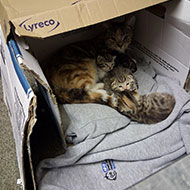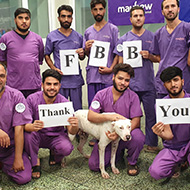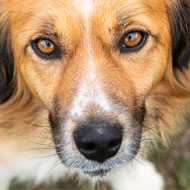The rules have been welcomed as a positive step for horse welfare.
The Jockey Club has announced new rules for next year’s Grand National, following an assessment of the 2023 race.
The new rules include a reduction in the maximum number of horses that can partake in the race. The previous safety limit of 40 horses, introduced in 1984, has now been cut to 34.
The decision was made in response to independent research, as well as The Jockey Club’s own internal analysis, which showed a direct correlation between the number of runners in a race and the risk of falling.
External and internal research has also prompted the horse-racing organisation to move the first fence of the race 60 yards closer to the start, which should prevent horses from building up too much speed at the start of the race.
Other rules that were assessed include a reviewed start-time for the race, which may be brought forward to provide optimal conditions, as well as development of pre-race veterinary protocols.
The Grand National made headlines this year, after animal rights activists delayed the start of the 2023 race by 14 minutes. 118 protestors were arrested for the disruption.
In response, the Jockey Club partnered with the British Horseracing Authority (BHA) to review the Grand National’s rules, in a move to improve the welfare of its race horses. The process took into account the views of the racing industry, BHA and World Horse Welfare, as well as key stakeholders such as jockeys and trainers.
The latest changes have been positively received by veterinary and animal welfare organisations, including the British Veterinary Association (BVA) and British Equine Veterinary Association (BEVA).
BVA senior vice-president Malcolm Morley said: “When it comes to using animals in sport, it is vital that the very highest welfare standards are in place. It’s therefore positive to see the Jockey Club taking steps to help reduce fatalities and injuries during the Grand National, which has sadly seen the death of a number of horses in recent years.
“However, off the course we must also ensure ‘animal athletes’ live good lives and BVA is currently working with our specialist divisions to explore how this can be achieved.”
BEVA president Roger Smith also commented: "BEVA is fully supportive of Racing's decision to reduce the size of the field in the Grand National.
“This has been shown to have a beneficial effect of reducing injury risk and is one of a number of proposed alterations that are evidence-based and are in the best interests of the welfare of racehorses."
The Jockey Club’s chief executive Nevin Truesdale believes that changes are vital for the future of the sport.
He said: “That means our sport, like many other sports have done, needs to recognise when action needs to be taken to evolve because the safety and care of horses and jockeys will always be our number one priority.
"In making these changes at Aintree we are underlining our relentless focus on welfare and our commitment to powering the future of British racing.”
Image © Shutterstock






 The BSAVA has opened submissions for the BSAVA Clinical Research Abstracts 2026.
The BSAVA has opened submissions for the BSAVA Clinical Research Abstracts 2026.
